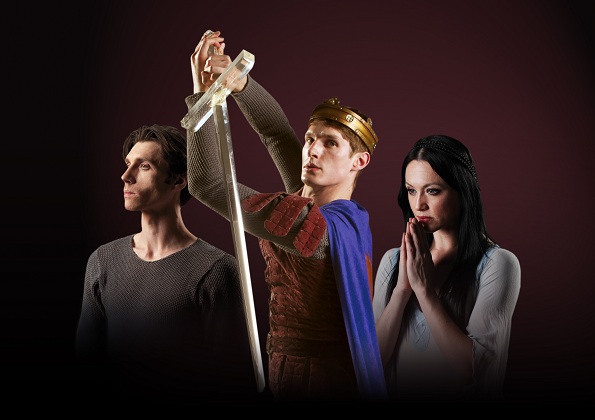By Grace Edwards
Creating a new ballet is never easy, but when that ballet is King Arthur and the Tales of Camelot, the pressure is on. Inspired by the popular novel, The Mists of Avalon, the Queensland Ballet’s latest work is the result of Artistic Director François Klaus’ ongoing fascination with the Arthurian legend— a passion he discovered whilst creating the lead role of King Arthur in John Neumeier’s King Arthur’s Saga during his time working with the Hamburg Ballet. Klaus let Dance Informa’s Grace Edwards in on the preparations behind staging such an iconic story.
In this production, both choreography and poetic text are used to make the epic plot easier to follow. “Dance is very adept at showing emotions, so with that you can build quite a lot,” says Klaus. “The problem in dance, however, is that you cannot say, you know, ‘This man is my brother.’ Ultimately, the majority of people respond better to dance if they understand the context in which it happens, and that is the key to trying to make ballet mean something.”
A ballet means nothing, of course, without its dancers. Upcoming performances will feature Rachel Walsh as Queen Guinevere and Keian Langdon as King Arthur. The role of King Arthur’s half-sister, pivotal in Klaus’ version, will be performed by Claire Morehan. Responsible for delivering the text in his role as Merlin is former Expressions Dance Company member Dan Crestani, whose dramatic portrayals of characters such as Richard III brought him to Klaus’ attention.

Queensland Ballet Artistic Director Francois Klaus and Head of Wardrobe and Resident Designer Noelene Hill
Klaus admits to a fairly personal casting process, with strong ideas about who will perform which roles from the beginning. “Not that you should put the dancers in a box”, he warns. “But when you have your own company you tend to shape it over the years, to a large extent, to your taste. You know how you like people to dance and when you are the chief choreographer, you tend to associate characters with some of the people you already have in the company because you know that they fit those roles very well.”
Other aspects of the creative process, nonetheless, require teamwork. “We work quite closely together really,” reflects Klaus. “There’s David Walters, our lighting designer. David is extremely good at working out the reasons and motivations of the plot. I know he is technically there for the lighting design, but he is really good dramatically as well. And my wife Robyn – we make a trio that work really closely together right from the beginning. And then of course the designer for the set will be present, not as intensively, but of course he is the one who has to realise optically how the ballet is going to be presented.”
“Musically, I work quite closely with Greg Young, who is there to conduct, but at the same time we have a relatively small orchestra so he arranges the music for that ensemble. He’s a very good pianist as well. He even has to compose for some parts or elements of the ballets sometimes. So yes, that’s how you assemble the puzzle!”
With so many parts of the jigsaw to juggle, it becomes difficult to measure the time commitment involved in creating a ballet. “In the studio with the dancers I usually work quickly – it is easier for me because I’m more aware of what I’m doing. If I hesitate too much, I find it difficult to keep inspired. So on a good day I work quickly. But the preparation period before you enter the studio with dancers, is what takes a long time.”
“Like right now I’m reading material for something I’m going to do in a year and a half. But that’s not really like work, you just read books and have things in the back of your mind. It’s not intensive work, but it’s background and once you have that you can get more practical and see what you want to do with it.”
So how does one know when a ballet is complete? For Klaus, the answer is never. “I will always modify my ballets. Some you are really happy with right away and you may hardly touch, though others you may feel you have to work at again and again as you feel you can do better. You know, sometimes a very small change can make quite a difference, because a lot of it has to do with timing and speed.”
King Arthur, Klaus admits, falls into the latter category. “I think it is one I have had to work on quite a lot,” he says. “I did an attempt a few years ago and I just feel that now, I have the company capable of doing it.” Soon enough, the Queensland Ballet will have the opportunity to prove it.
Queensland Ballet presents King Arthur and the Tales of Camelot at the Playhouse, QPAC, 15 – 29 October. For more information on the production, visit queenslandballet.com.au.
Bookings qtix 136 246 or qpac.com.au

















